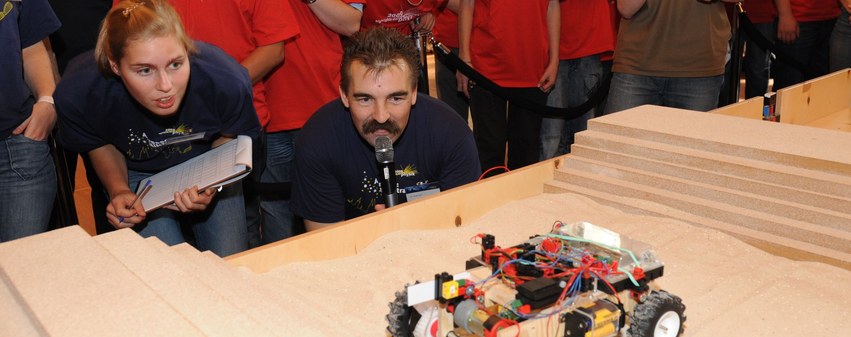Exciting physics
Experiment, do handicrafts, win prizes: This is what the nationwide school competition "exciting physics" is all about. The German Physical Society regularly organises this competition on the "Highlights of Physics" together with the Wilhelm and Else Heraeus Foundation and the respective host.
The aim of "exciting physics" is to solve physical problems as creatively as possible. Physical originality and technical sophistication are particularly in demand. During the annual science festival "Highlights of Physics", all constructions are evaluated by a jury of experts. There are numerous non-cash prizes to be won.
Pupils in grades 5 to 13 can take part, either individually or as a group. Each team should have one responsible teacher as "official" contact person. He or she can also participate in the project by providing tips, advice, small aids from the physics collection or even by supporting the project.
How can one participate? Quite simply!
Anyone who would like to work on one of the tasks should do the following: contact a physics teacher, register without obligation at "exciting physics" www.exciting-physics.der [EXTERN], plan the project, and then get started with the experiments!
All tasks can be completed individually or in a group. If you have any questions or problems, the organisers will of course be happy to help. Important: You should check the website of "exciting physics" regularly to get all the latest news under News: Maybe there are changes in the schedule, or your urgent question is already answered in the FAQ.
Afterwards you have about three weeks until the final of the competition. In each competition the three best placed teams or students will receive prizes, which will be awarded on the same day. In addition, there are a lot of special prizes every day and also prizes in a raffle.
Some of the tasks change from year to year, but some classics are often included. These include, for example:
Particle accelerator: The aim of the task is to design and build an apparatus that can be used to transport a standard tennis ball as accurately as possible to a specified destination using self-definable initial conditions (such as initial speed and throwing angle).
Paper bridge: The aim is to build a bridge that spans one metre and bears a weight of one kilogram. Only paper, twine and glue are permitted as building materials.
Submersible: The aim is to construct a vehicle that sinks to the bottom of an aquarium without remote control and stays there for a certain period of time: After one minute at the earliest and after three minutes at the latest, the submarine should resurface independently.
